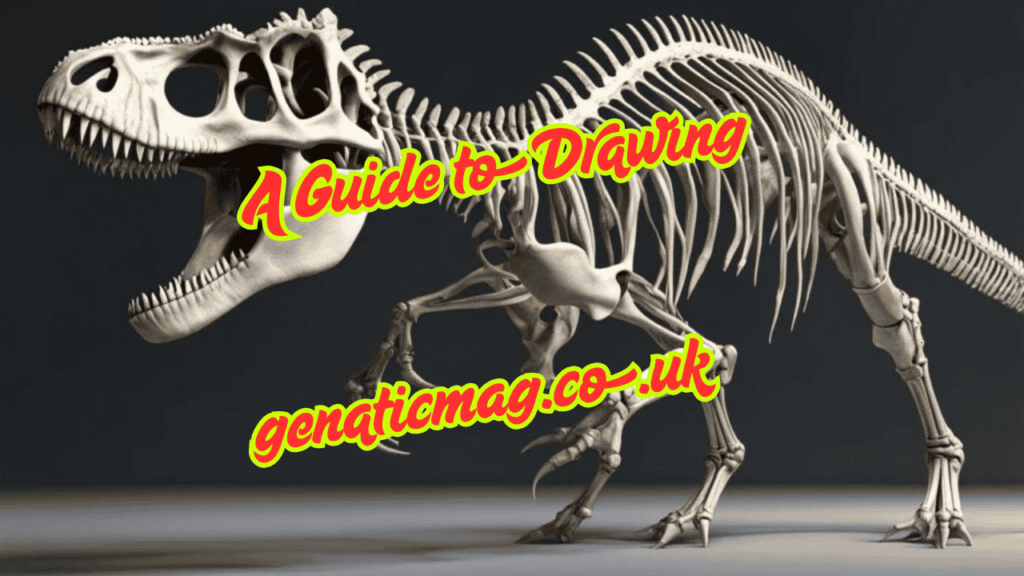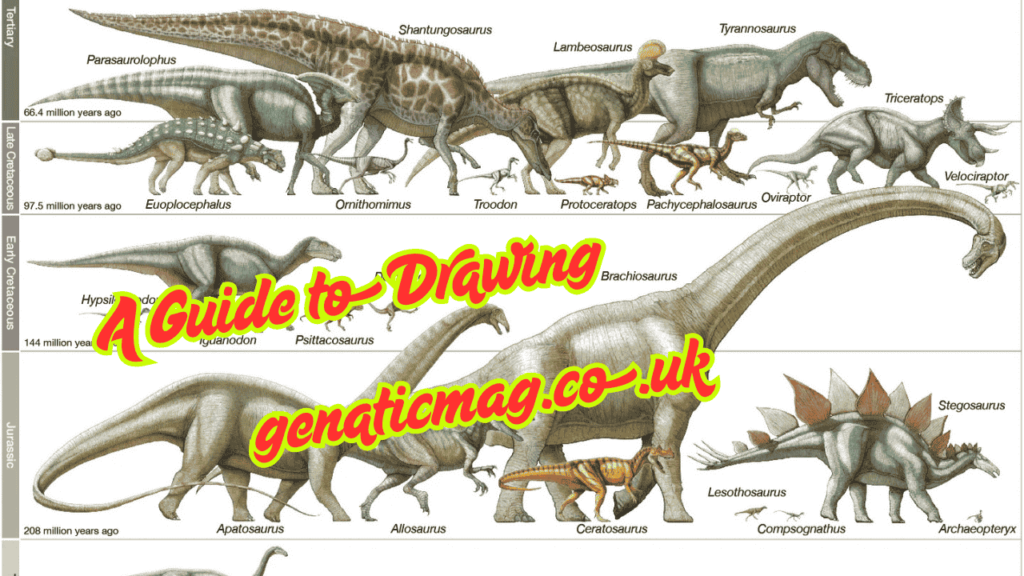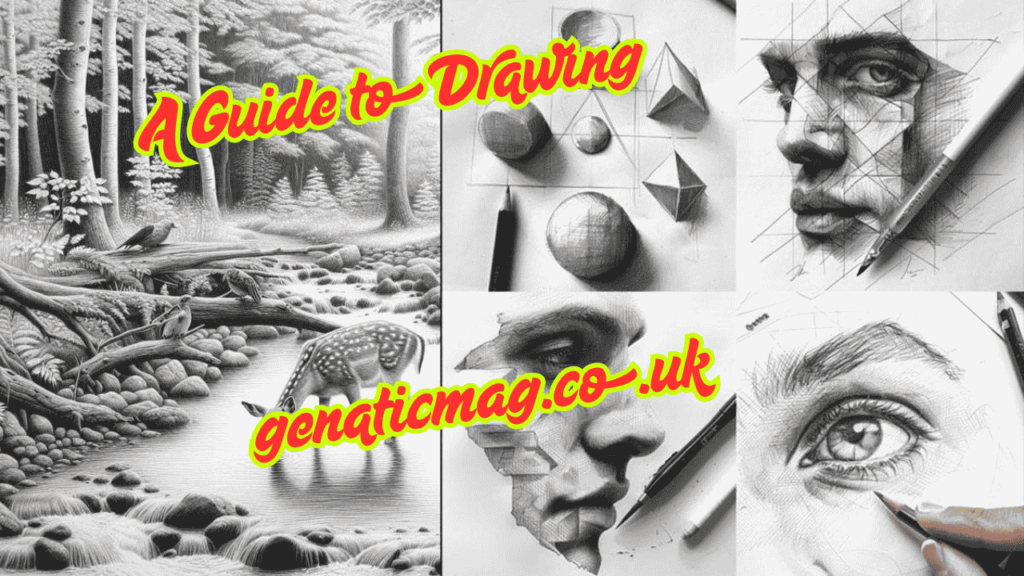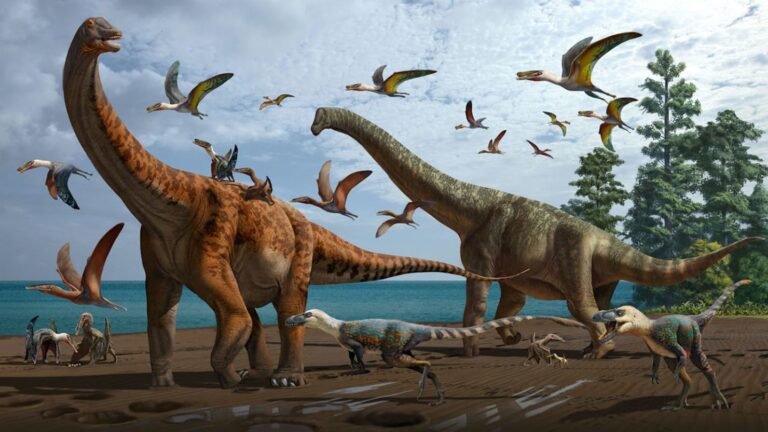Introduction: The Jurassic Spark of Creativity
Dinosaurs have captivated imaginations for centuries—from the gigantic Tyrannosaurus Rex to the gentle Brontosaurus, these prehistoric beasts continue to inspire awe and curiosity. “A Guide to Drawing:sdn2sx5y0y0= Dinosaur – Unleash Your Inner Artist ??”, is your ultimate starting point to dive into this world with a sketchpad in hand. Whether you’re a budding artist or a seasoned illustrator looking for a fresh challenge, drawing dinosaurs helps bridge the worlds of art and ancient history, allowing you to explore anatomy, expression, and creativity like never before.
This article not only celebrates artistic exploration but also gives you step-by-step advice, tips, and insight into how to bring these majestic creatures to life on paper. Let’s unleash your inner artist and draw like a paleo-visionary!
Understanding Dinosaur Anatomy: Building the Foundations

Before we even pick up a pencil, the foundation of A Guide to Drawing:sdn2sx5y0y0= Dinosaur – Unleash Your Inner Artist ?? lies in understanding the anatomy of dinosaurs. While many species differ drastically—from feathered Velociraptors to the bony-plated Stegosaurus—they all follow certain skeletal and muscular structures which you should study.
Key anatomical features to focus on:
- Skull and Jaw Structure: Learn how to separate carnivorous and herbivorous skulls.
- Limbs and Posture: Dinosaurs had different gaits. Theropods walked bipedally whereas sauropods lumbered on all fours.
- Tail Balance: Many creatures utilized their tails for balance; preserving that curve adds realism.
- Scales and Feathers: Recent finds reveal many dinosaurs possessed feathers. Textures matter!
Studying reference images from museums, fossil reconstructions, and scientific illustrations will sharpen your visual understanding and form the backbone of your drawings.
Choosing Your Dinosaur: Inspiration and Selection

“A Guide to Drawing:sdn2sx5y0y0= Dinosaur – Unleash Your Inner Artist ??” encourages you to choose a dinosaur that excites your imagination. Your emotional connection to the creature will fuel your motivation.
Some popular picks to get started:
- Tyrannosaurus Rex – King of the dinosaurs, great for acquiring powerful face expressions.
- Triceratops – A excellent technique to practice drawing horns, beaks, and thick textures.
- Pteranodon — Technically not a dinosaur, but useful for studying wing structure.
- Ankylosaurus — A tank-like monster that teaches structure, symmetry, and texture.
- Brachiosaurus – For those who wish to work on size, height, and proportion.
Choosing one dinosaur to focus on allows you to master its form in various poses—walking, roaring, interacting, and more.
Drawing Techniques: From Sketch to Stunning

The heart of “A Guide to Drawing:sdn2sx5y0y0= Dinosaur – Unleash Your Inner Artist ??” is practice. Here’s a layered technique that transforms your rough concepts into museum-worthy masterpieces.
Step 1: Gesture Drawing
Start loose. Capture the essence of motion and weight with sweeping lines. Don’t worry about details—just focus on the overall silhouette and posture.
Step 2: Structural Sketching
Now build upon your gestures using basic geometric forms—ovals for joints, cylinders for limbs, and wedges for heads. This gives you a 3D framework to build upon.
Step 3: Detailing and Texturing
Time to refine! Add scales, wrinkles, feathers, and muscle definition. Think about skin folds and how the dinosaur interacts with its environment.
Step 4: Shading and Lighting
Introduce light sources. Use shading techniques like cross-hatching or smooth gradients to emphasize depth and form. Consider dramatic lighting for a cinematic effect.
Bringing Dinosaurs to Life: Emotion and Expression
You might not think of dinosaurs as expressive creatures, but in “A Guide to Drawing:sdn2sx5y0y0= Dinosaur – Unleash Your Inner Artist ??”, we challenge that idea.
Use eye shape, brow angles, jaw openness, and body language to reflect emotion—curiosity, rage, fear, calm. Think of a T-Rex looking lovingly at its hatchling or a raptor caught mid-sprint. These human-like moments create connection and make your artwork resonate.
Stylization vs. Realism: Finding Your Voice
Art is a spectrum, and “A Guide to Drawing:sdn2sx5y0y0= Dinosaur – Unleash Your Inner Artist ??”, recognizes that your style is yours alone.
Realism
- Focused on accuracy and detail.
- Often used in scientific illustrations or documentaries.
- Requires heavy reference work and anatomical precision.
Stylization
- Exaggerates features, adds personality.
- Ideal for comics, animation, children’s books.
- Lets you break the rules and innovate visually.
Try both styles. Combine them. Develop hybrids. That’s the beauty of artistic freedom—dinosaurs become your canvas for self-expression.
Common Pitfalls to Avoi
Even the best artists make mistakes. Here’s what to watch out for while drawing your dino masterpieces:
- Overcomplication: Don’t start with every detail. Keep it simple first.
- Ignoring References: Real-world bones and fossils guide form.
- Flat Poses: Use perspective to give your dinosaurs depth and dimension.
- Neglecting Backgrounds: Dinosaurs lived in diverse environments—consider forests, deserts, or volcanic plains to enrich your scenes.
“A Guide to Drawing:sdn2sx5y0y0= Dinosaur – Unleash Your Inner Artist ??” teaches patience, and how errors are part of the creative process.
Daily Drawing Habits: Stay Sharp Like Raptor Claws
Consistency makes mastery. Create a sketch routine—maybe 15-30 minutes a day. Pick one new pose or expression to explore daily. Over weeks, you’ll see massive growth.
You can also keep a “Dino Sketchbook,” a themed journal where every page is a new interpretation, creature, or scene. It’s a powerful way to track progress and foster originality.
Conclusion: A New Era of Art Begins with You
“A Guide to Drawing:sdn2sx5y0y0= Dinosaur – Unleash Your Inner Artist ??” is more than a how-to—it’s a journey through time and talent. By learning to draw dinosaurs, you tap into both the ancient past and your creative potential. Every line you draw builds a bridge between imagination and history.
So grab your pencils, choose your creature, and roar onto the page. The world of prehistoric illustration awaits. And remember, in art, there are no extinctions—only evolution.
Also Read : Mastering the Art of Drawing:bxv6evbk8ta= Snake
